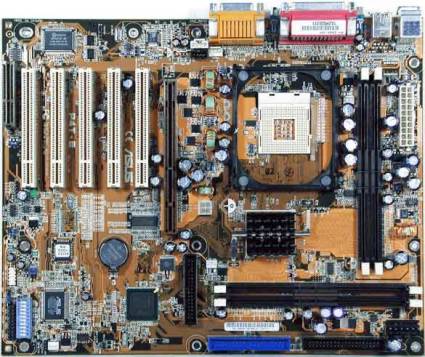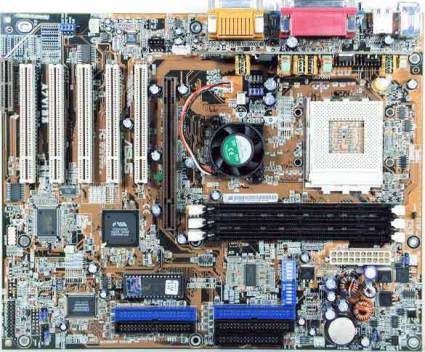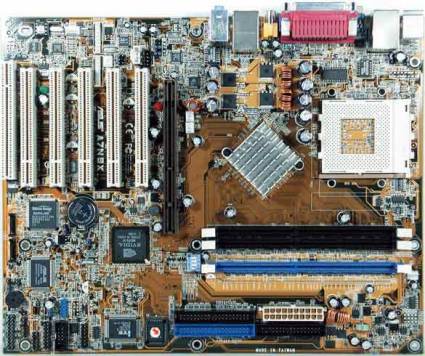Benchmark Marathon: 65 CPUs from 100 MHz to 3066 MHz
Three Hundred Hours Of Benchmark Testing, Continued
Socket 423: Intel Pentium 4 1300 MHz/2000 MHz
Board: Asus P4T (Intel 850)
RAM: 400 MHz RDRAM (PC800)
Socket 478: Intel Pentium 4 2000A
Board: Asus P4T-E Rev. 1.00 (Intel 850)
RAM: 400 MHz RDRAM (PC800)
High-end power for Rambus fanatics: Asus P4T-E with Intel 850 chipset.
Socket 478: Celeron 1700/2000, Intel Pentium 1800A/2533
Board: Asus P4PE Rev. 1.02 (Intel 845 PE)
RAM: 133/166 MHz DDR-SDRAM (PC2100/2700)
Get Tom's Hardware's best news and in-depth reviews, straight to your inbox.
Socket 478: Intel Pentium 2666/3066
Board: Asus P4T533-C Rev. 1.03 (Intel 850E)
RAM: 533 MHz RDRAM (PC1066)
Socket 462: Duron 550, Athlon 1000 (B), Athlon 1400 (C)
Board: MSI KT7 Turbo 2 Rev. 5.0 (VIA KT133A)
RAM: 100/133 MHz SDRAM
Socket 462: Athlon XP 1500+/2000+
Board: Asus A7V266-E Rev. 1.07 (VIA KT266A)
RAM: 133 MHz DDR-SDRAM (PC2100)
Socket 462: Athlon XP 2100+/2400+
Board: Asus A7V333 Rev. 1.04 (VIA KT333)
RAM: 166 MHz DDR-SDRAM (PC2700)
Entry into the world of Socket A: Asus A7V133 with VIA KT133 chipset.
Socket 462: Athlon XP 2600+/3000+
Board: Asus A7N8X Rev. 1.03 (Nvidia NForce 2)
RAM: 133/166 MHz Dual DDR SDM (2xPC2700)
View of the Asus A7N8X with Dual-Channel DDR333.
For clarification: to ensure that the CPU (or platform) is the dominant influence on the overall performance, we fitted all systems with an ATI Radeon 9700 Pro AGP display adapter and 512 MB of RAM. The Socket 7 system based on the VIA-MVP3 chipset was the only exception to this - here we used a GeForce 4 Ti 4600 at 3.3 V due to the lack of AGP compatibility. Because the CPU performance is weak, the fast graphics card does not really affect the results. While the processor can run at a maximum of 500 MHz (in the case of the AMD K6-2+/500), the NVIDIA card's GPU runs at 300 MHz.
Current page: Three Hundred Hours Of Benchmark Testing, Continued
Prev Page Three Hundred Hours Of Benchmark Testing Next Page Intel CPUs From 486DX To The Pentium 4/3066

